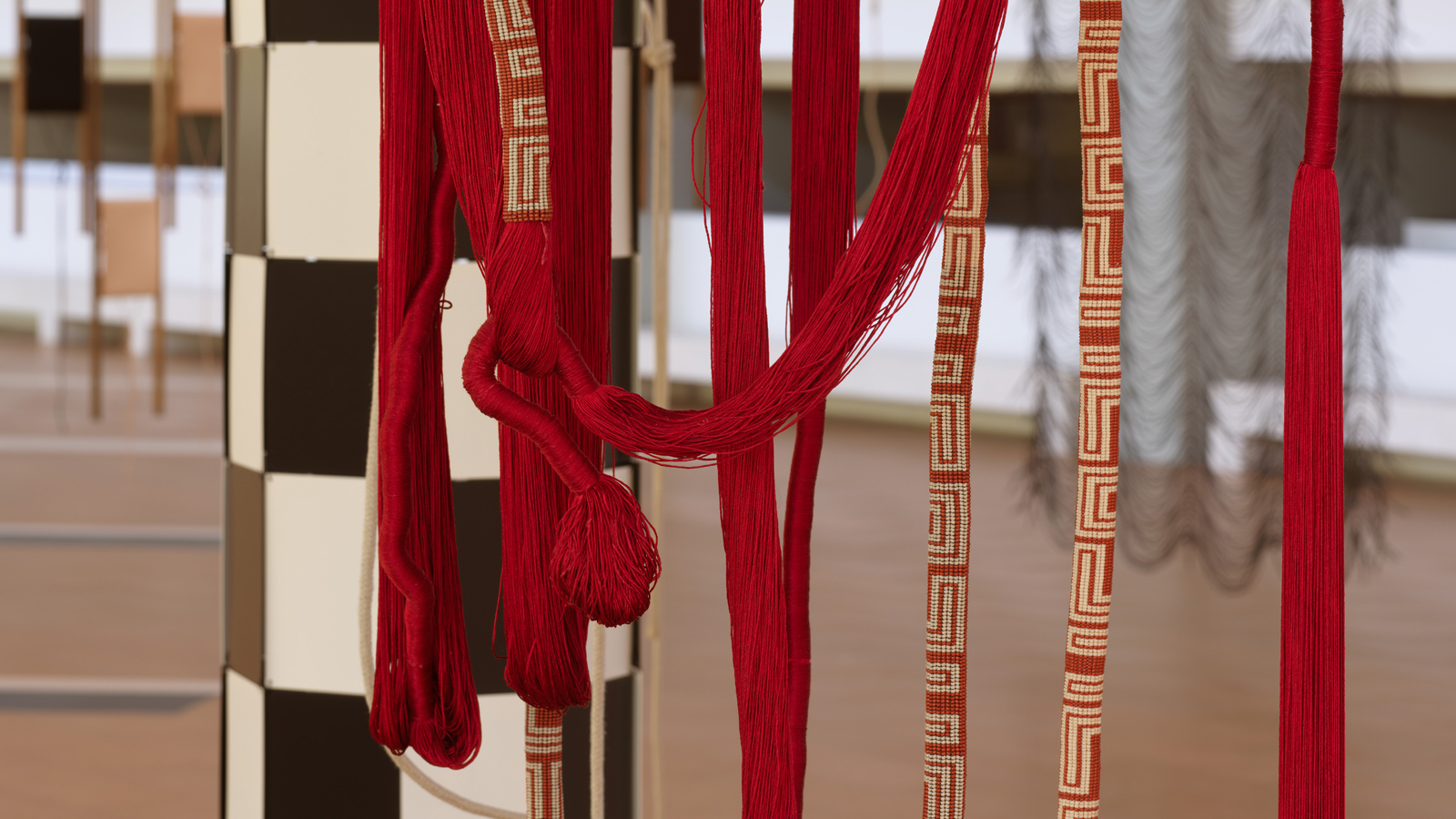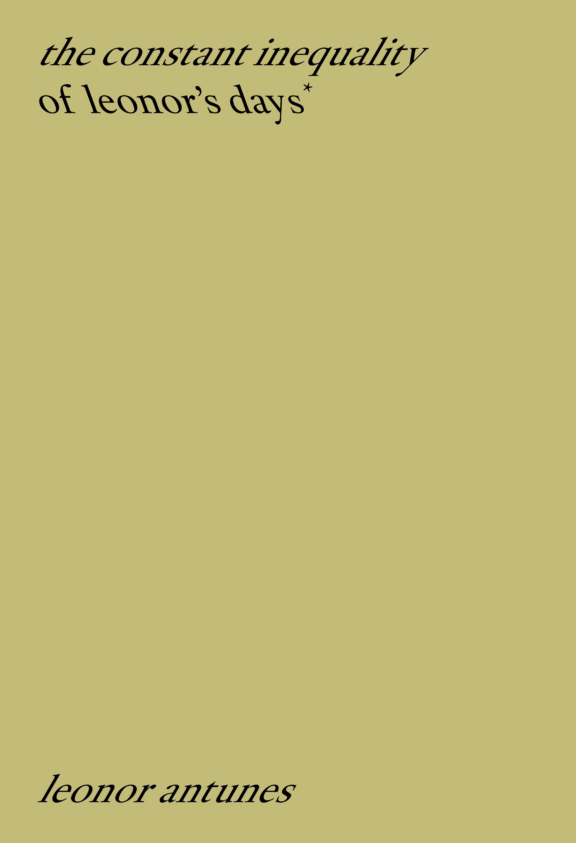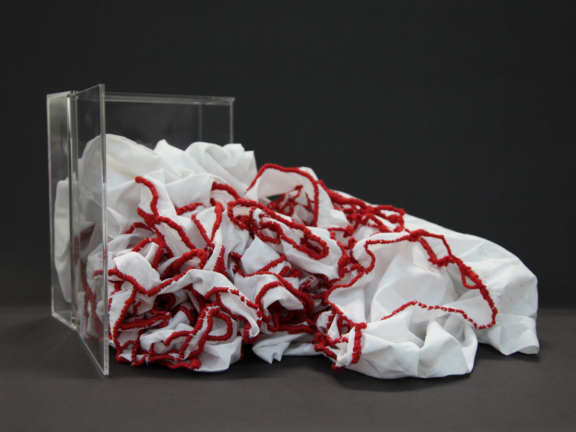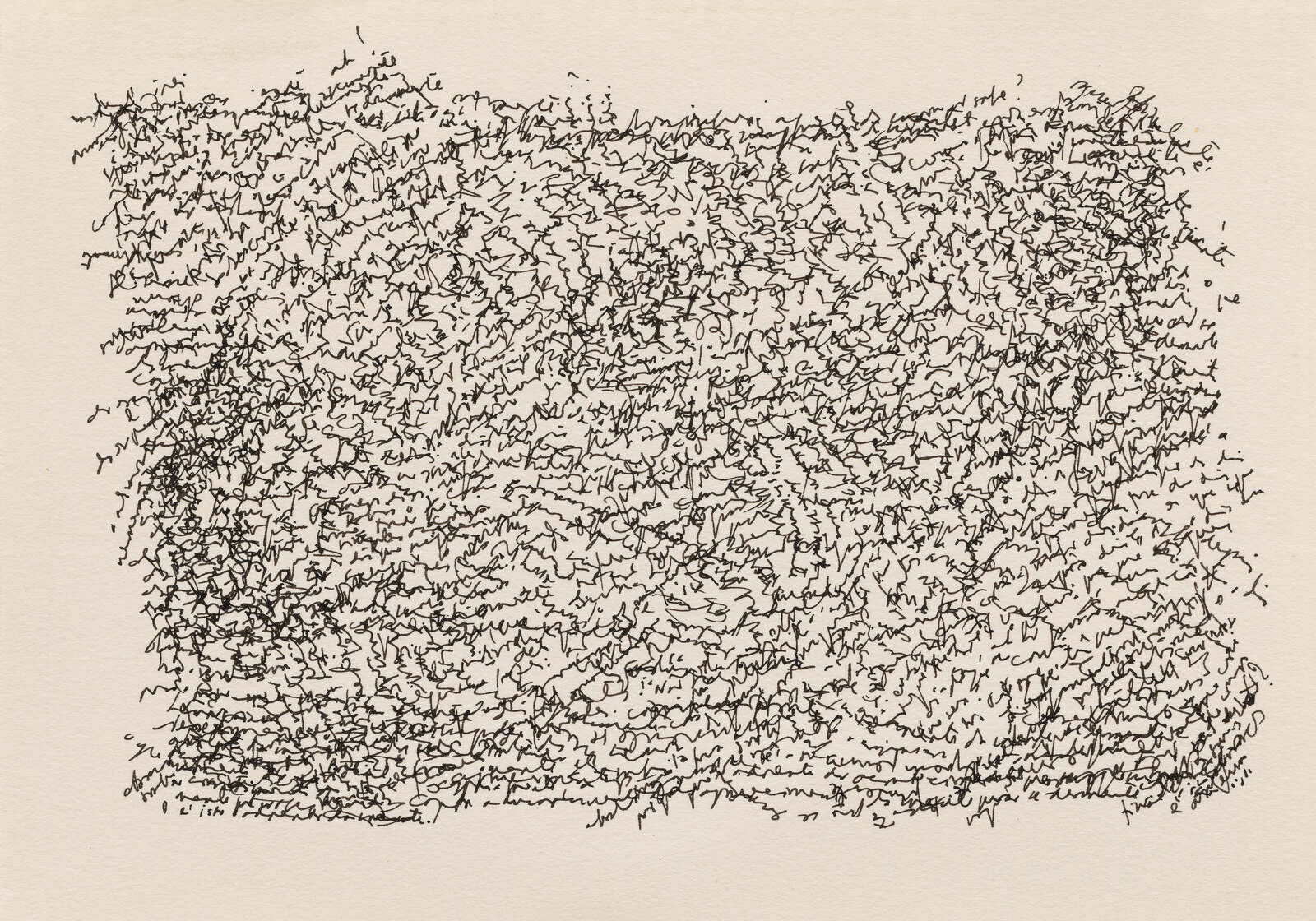
Leonor Antunes
the constant inequality of leonor’s days*
Event Slider
Date
- Sat,
- Closed on Tuesday
Location
Mezzanine Centro de Arte Moderna Gulbenkian Nave Centro de Arte Moderna GulbenkianPricing
- From 8,00 €
25% – Under 30
10% – Over 65
Cartão Gulbenkian:
50% – Under 30
15% – Over 65
Free entry for students with Cartão Gulbenkian on Saturdays between 18:00 and 21:00.
In two adjacent galleries, Leonor Antunes (b. 1972) brings about an encounter between her work – an installation devised for the entire space of the nave – and the works of around three dozen women artists from the CAM Collection presented on the mezzanine, creating a reciprocal link between her own work and practice and those of these artists. See exhibition map
The exhibition’s title, also the name of a drawing from the Collection by Ana Hatherly, from 1972, the year Leonor Antunes was born, is the most ‘autobiographical’ of her career. Leonor presents a field of reading on the vulnerability of the creative gesture and her own condition as an artist, in what constitutes a return to Lisbon, the city where she was born, for her first solo exhibition at CAM.
With a look at the Collection that values the unexpected formal relationships and the dialogue and parity between the artists’ works, in a chronology that dates from the 1930s to the present day, Leonor Antunes also includes works on loan – the drawing scores by composer Éliane Radigue, Guida Fonseca’s textile objects, Maria Keil’s bureau and Emily Wardil’s work on marbled paper – alongside new acquisitions and commissions, respectively Isabel Carvalho’s work and Jota Mombaça’s ‘environmental installation’ in the garden. Leaving the longitudinal wall of the gallery ‘raw,’ Leonor suspends works from the Collection on six panels of slatted wood – ‘voilettes’ – which form a sculptural element that is repeated on both floors. These displays are a reappropriation of Charlotte Perriand’s reticulated façade, designed for the Japanese ambassador’s residence in Paris in the 1960s, while revisiting the modern exhibition design solutions of Franco Albini/Franca Helg and Lina Bo Bardi, namely the iconic glass easels for presenting works at the São Paulo Museum of Art (MASP) by Bo Bardi.

In the installation in the nave, the artist simultaneously negotiates with the space and with CAM’s historical context, as in the suspended sculptures based on works by Ana Hatherly, which we meet again in the exhibition of the Collection, and by the British architect Sadie Speight, wife and colleague of Leslie Martin, who participated on the architectural project for the former CAM building but was never given credit for it. Starting with Speight’s career and a web of relationships and analogies, Leonor evokes and names in her sculptures other historical figures of the international modern movement, such as Marian Pepler and Sophie Taeuber, in addition to those mentioned above.
In a gesture to unify the space, Leonor conceived a large cork floor sculpture, entitled ‘forty five’, with linoleum and brass inlays, which transposes a modified design for a knotted rug by Marian Pepler, a British textile designer who collaborated with Speight. We find this quotation to Marian Pepler’s rug again in the suspended sculptures-lamps, made of painted aluminium and brass, which draw (two) vertical lines and circles (light bulb globes) in the nave space, the only source of artificial lighting in the intervention, which reinforces the sensory and domestic perception of the museum space.
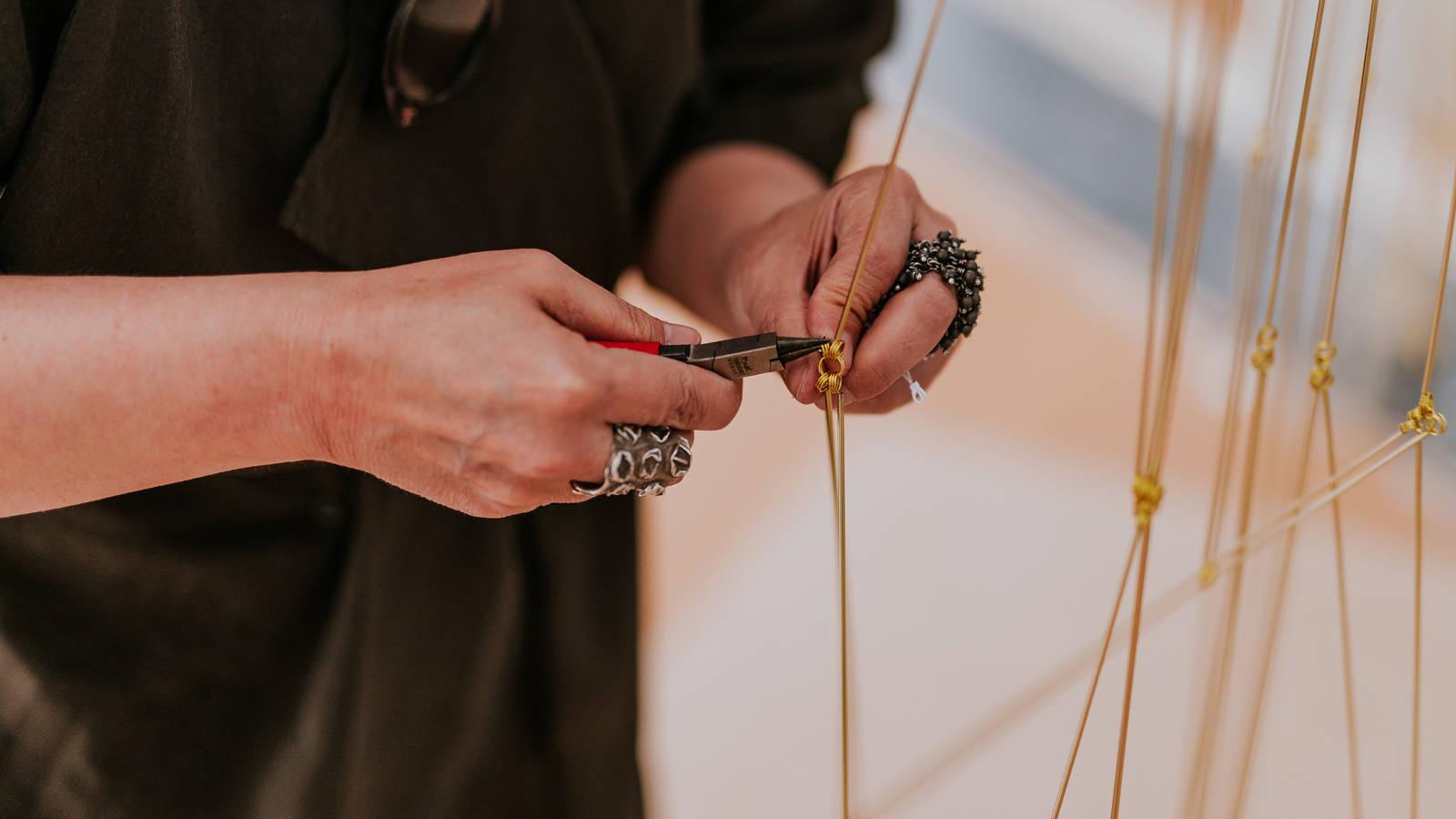
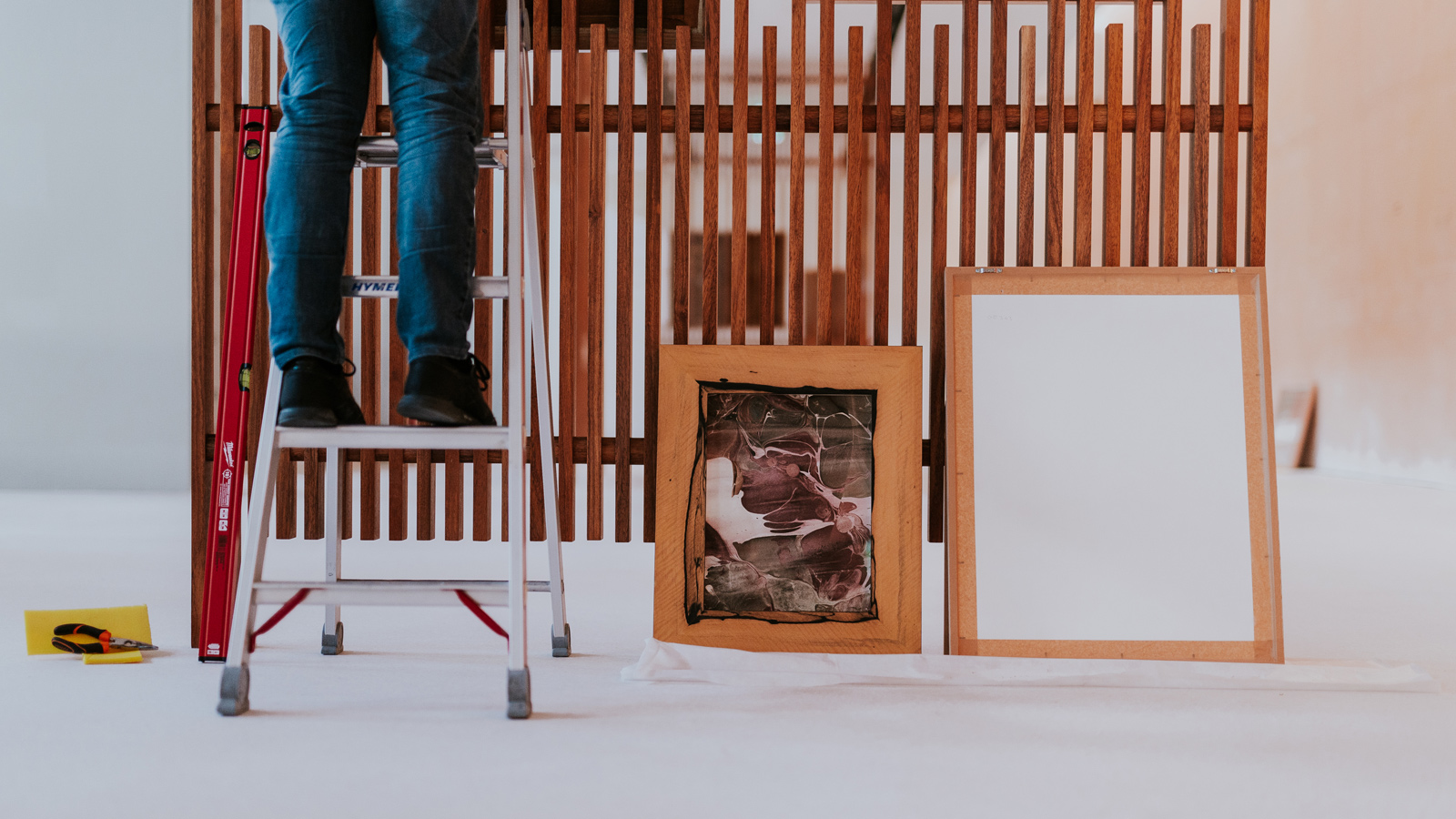
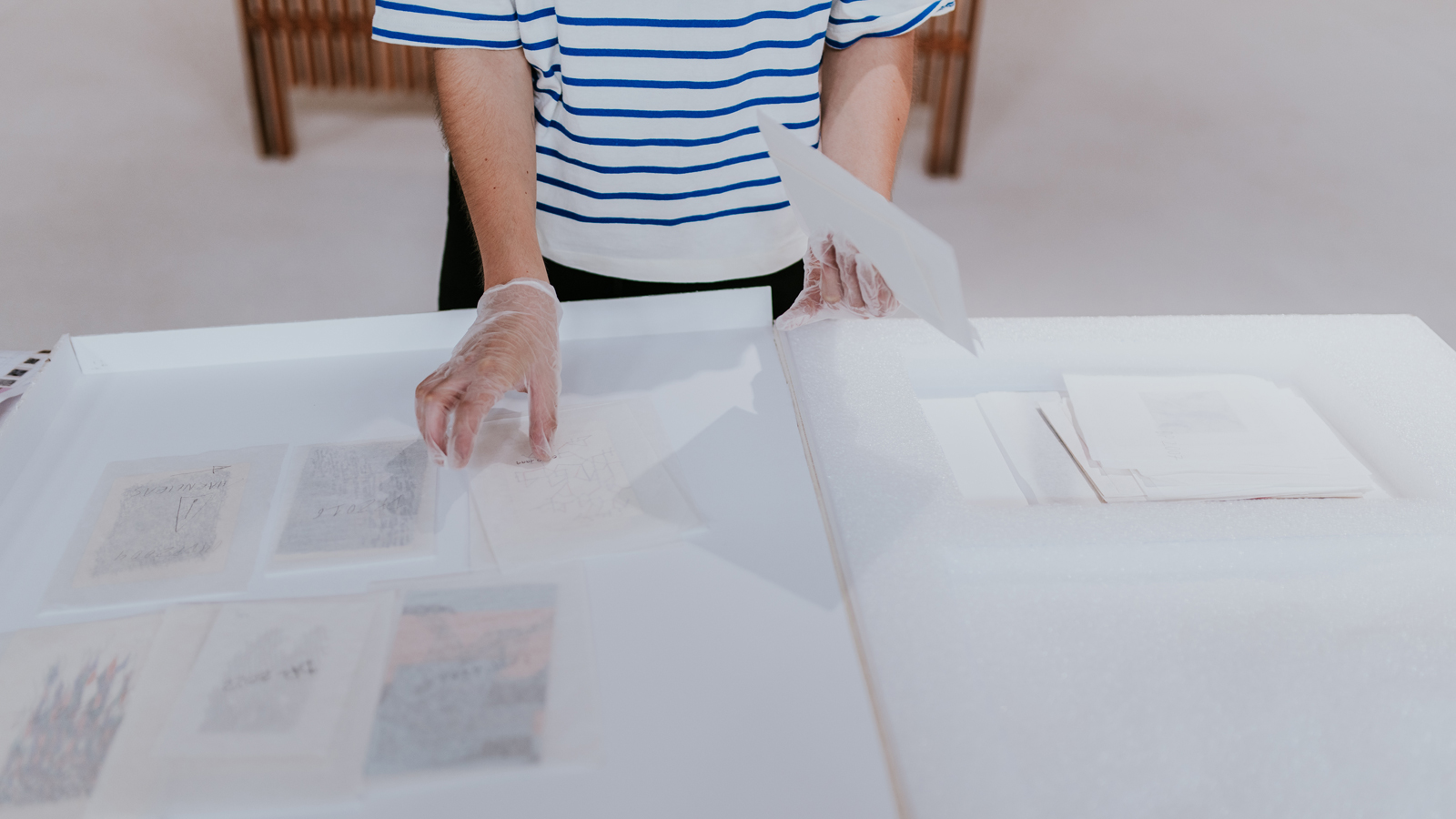
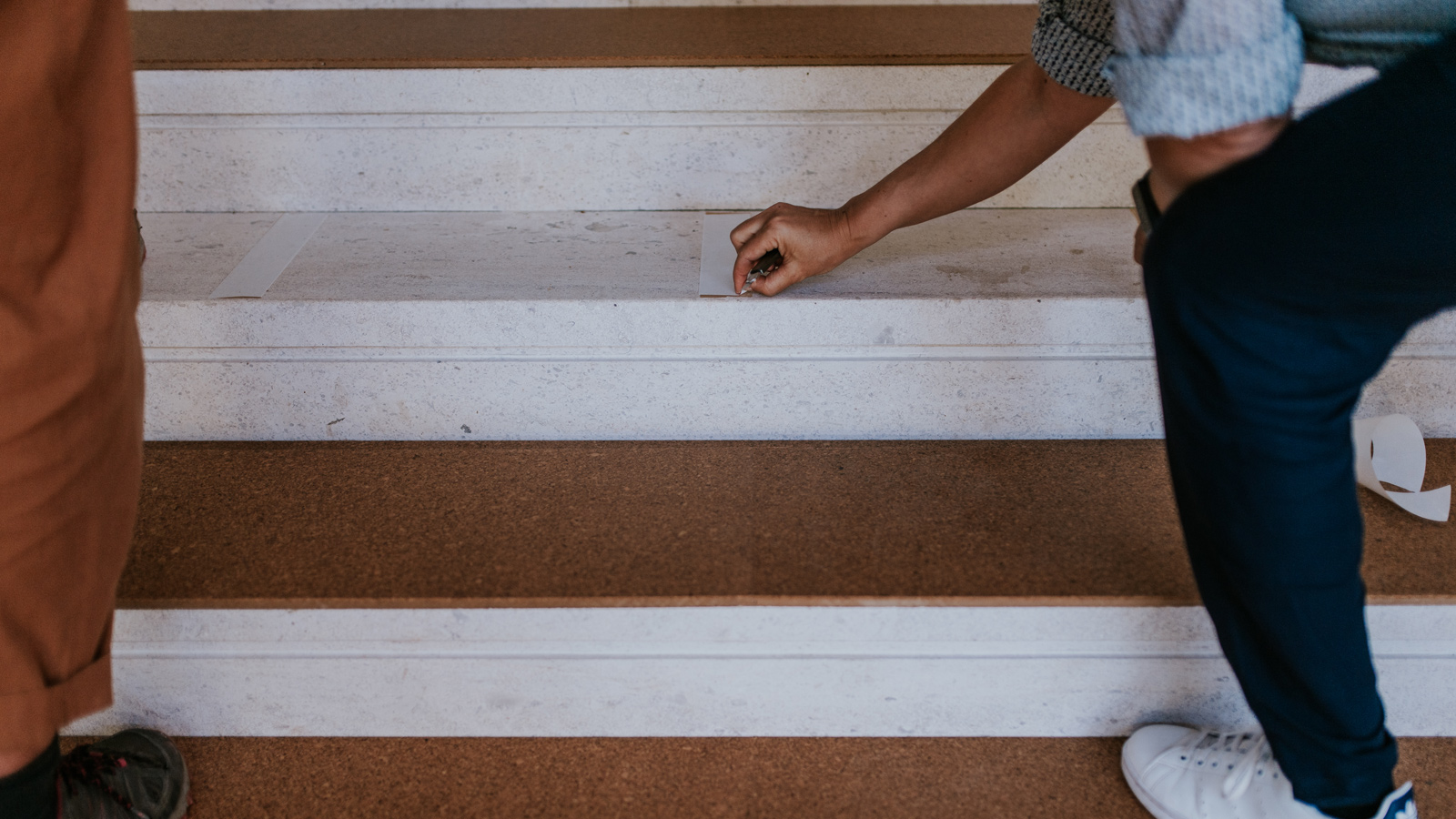

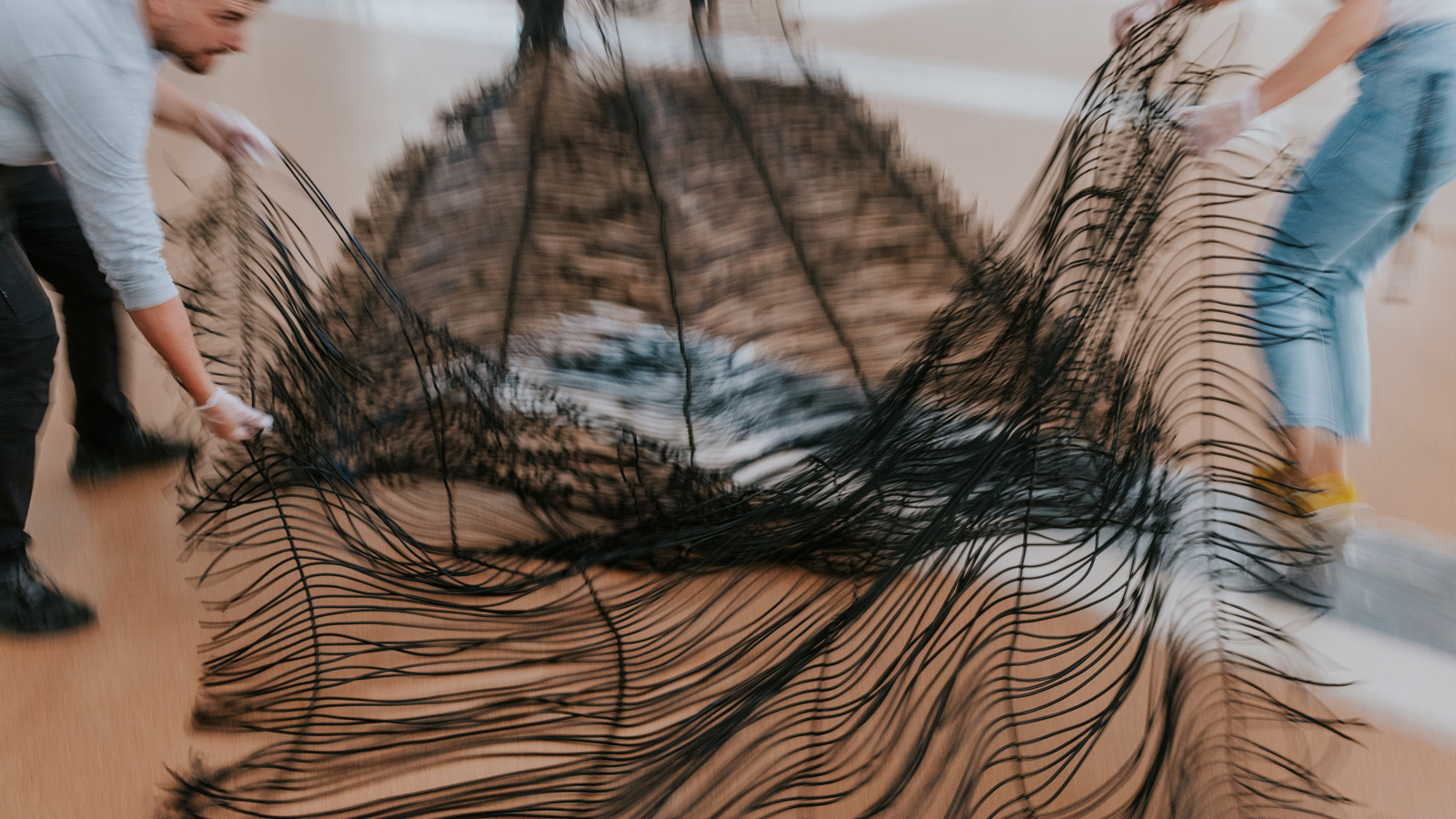
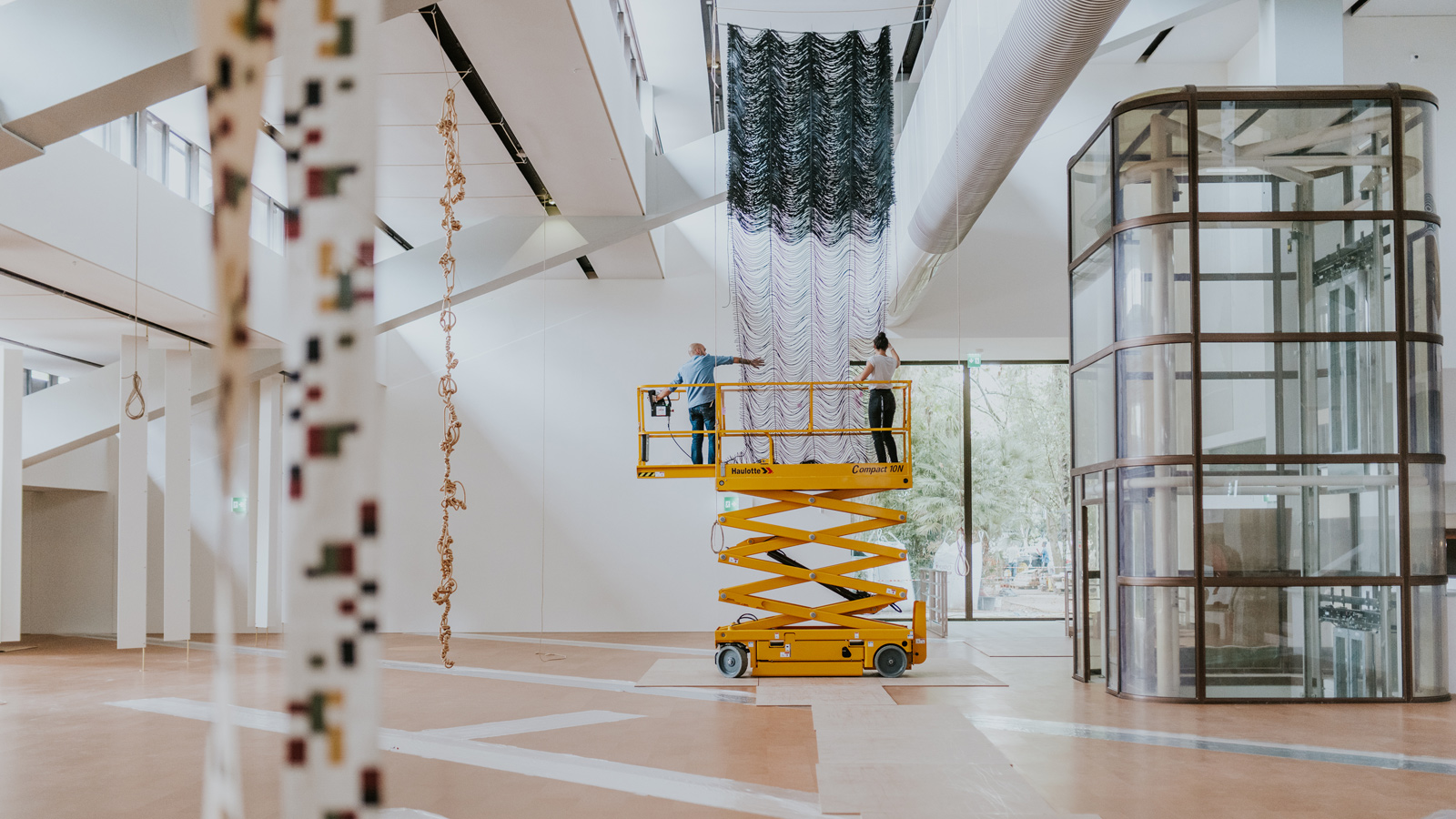
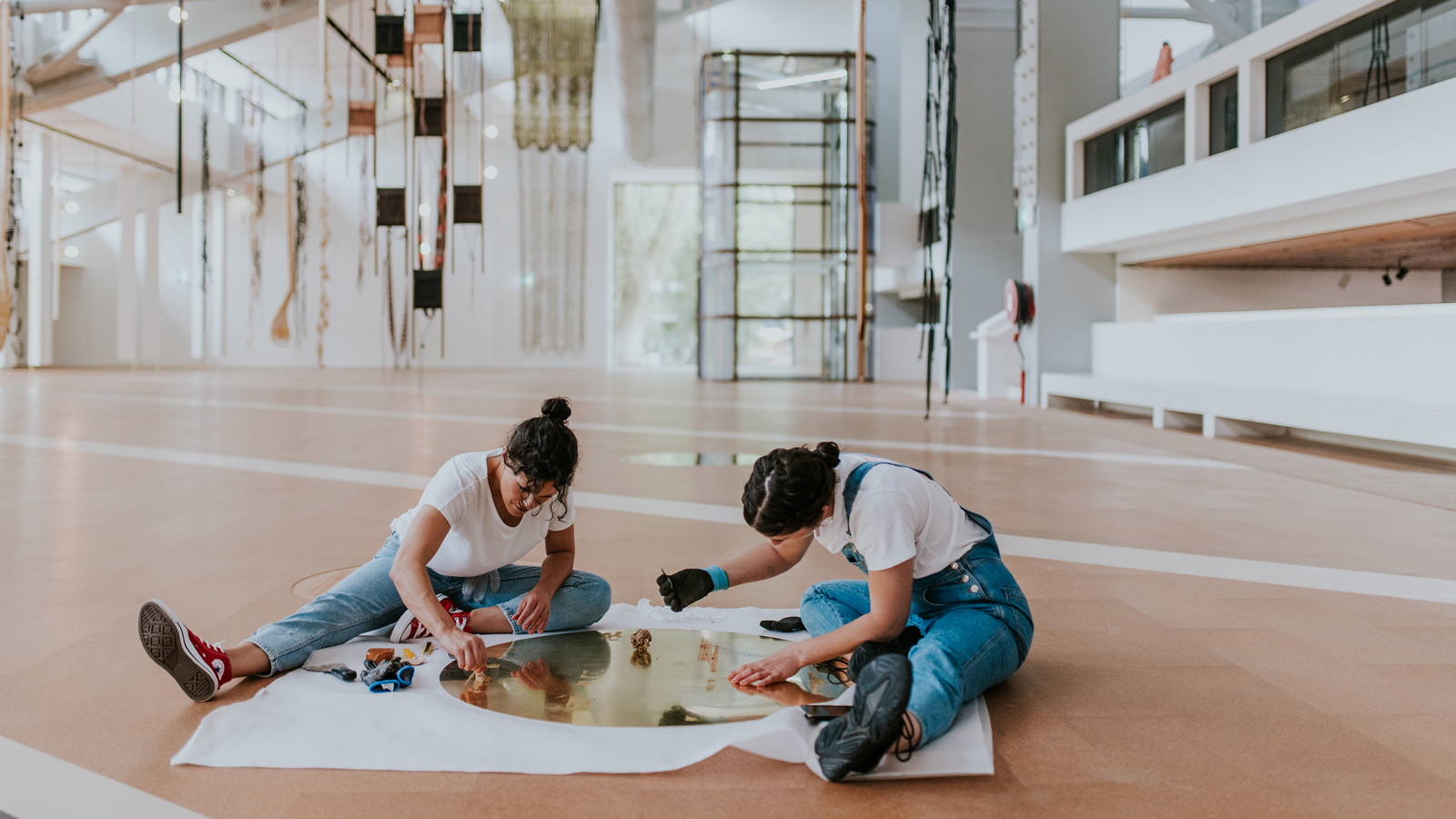
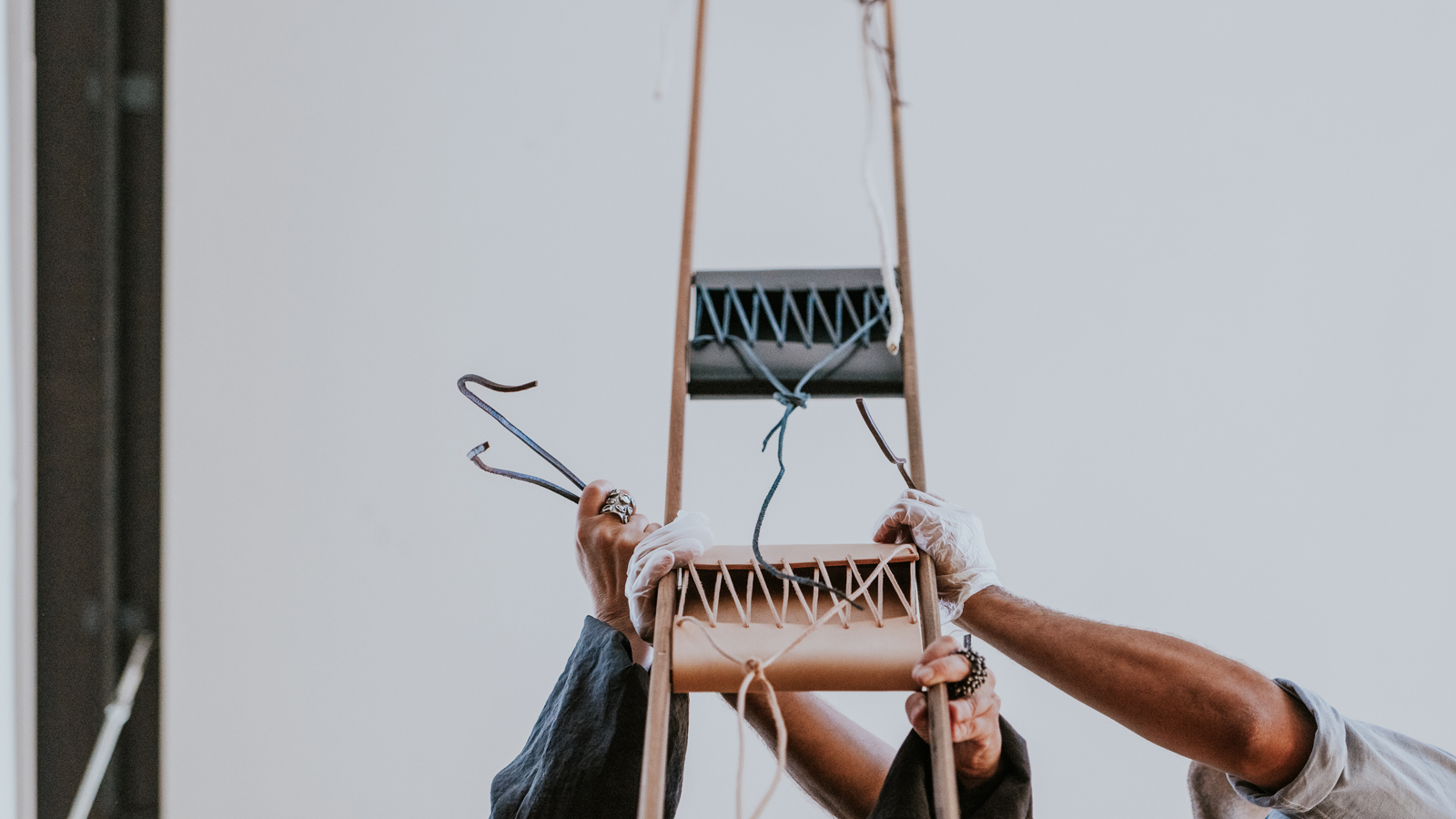
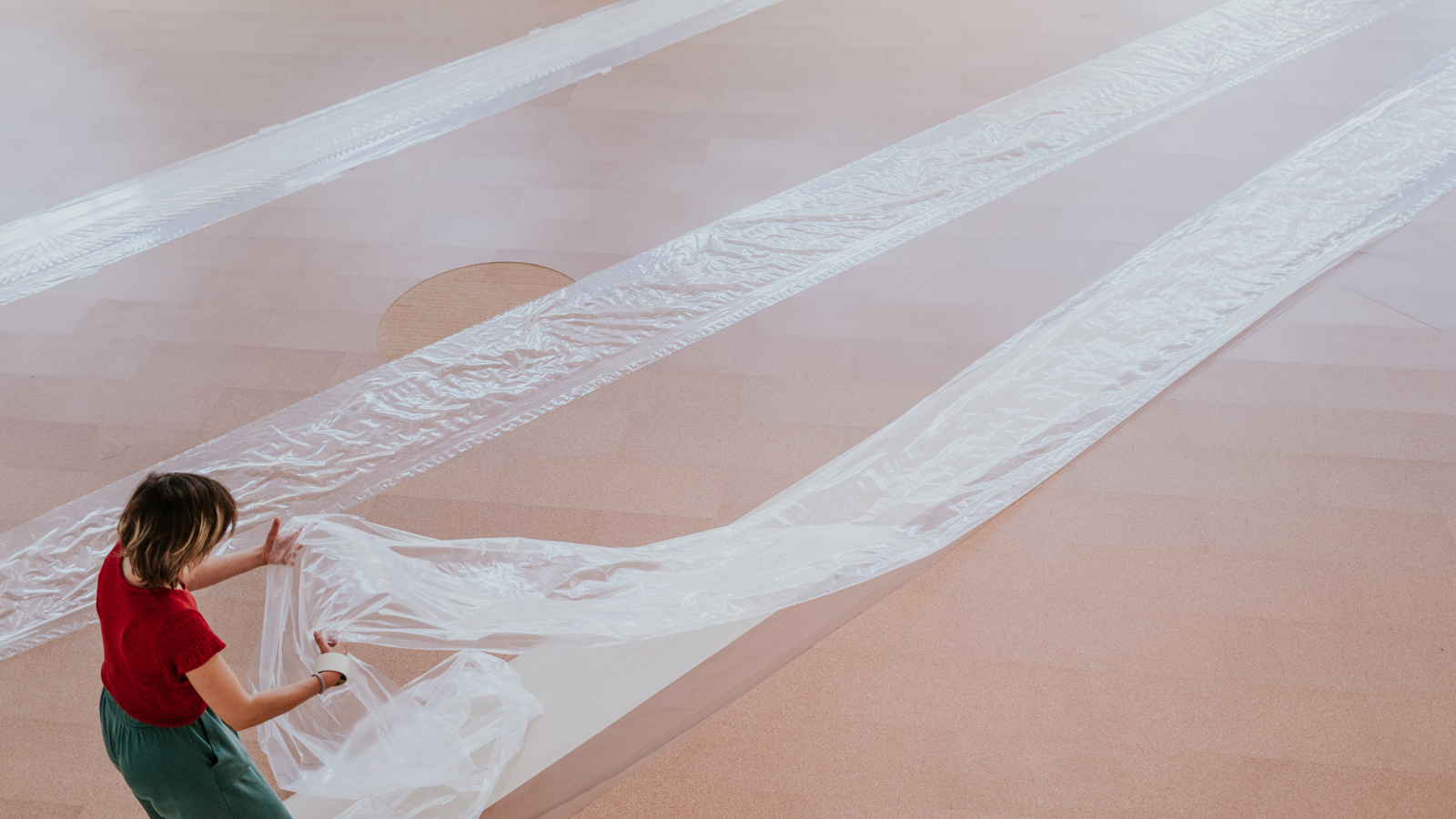
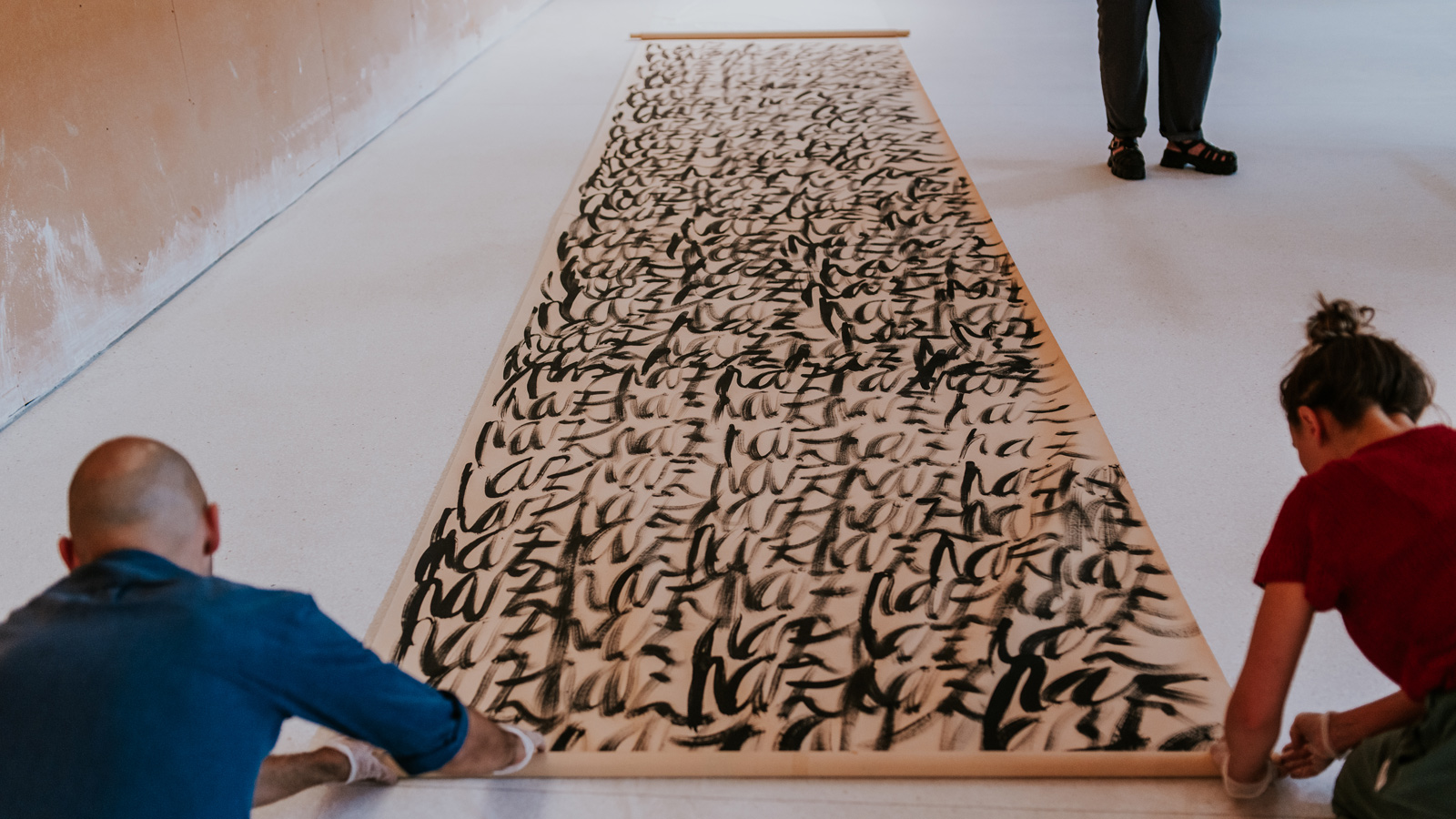
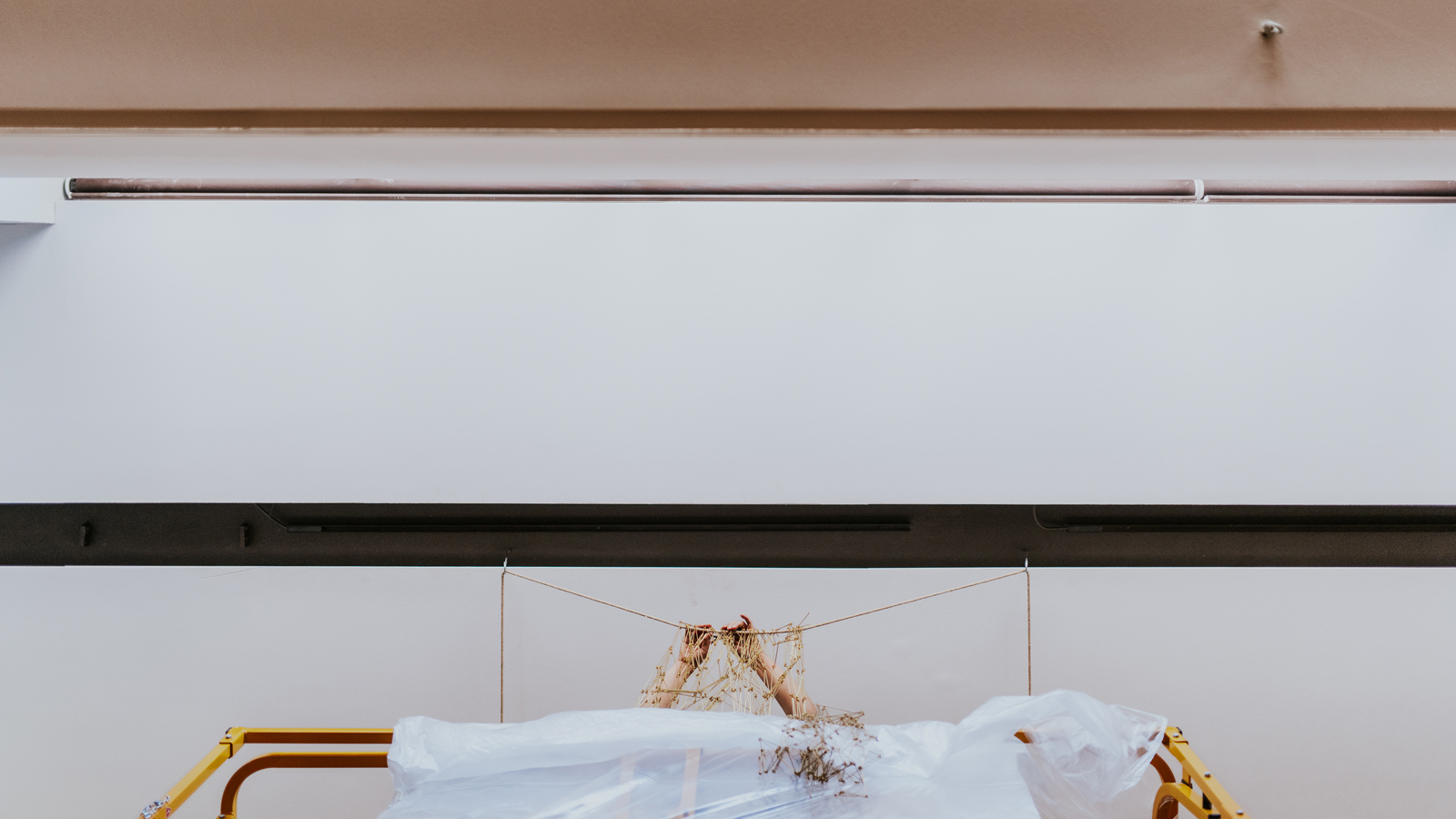
Publications
Biographies
-

Leonor Antunes
Leonor Antunes (Lisbon, 1972) is a Portuguese artist based in Berlin whose practice is inspired by important figures in the realm of creation in the 20th century, and often influenced by female protagonists. Her work begins by measuring features of architecture and design that interest her. She then uses these measurements as units which can be translated into sculpture. Embracing traditional craftsmanship from around the world, she employs materials such as rope, leather, cork, wood, brass, and rubber to create unusual forms.
Curators / artists texts
Leonor Antunes
I selected a group of works made by a few women artists who are represented in the CAM Collection, with a particular gaze on those of African descent. I added another four works, that even though not part of the Collection, I felt important to introduce in this context: a cabinet by Maria Keil, a score by Éliane Radigue, a printed paper by Emily Wardill and three woven pieces by Guida Fonseca. I invited Jota Mombaça, who did a performance in the Gulbenkian Garden; the resulting ceramic piece can be seen in the lake outside, and is now part of the CAM Collection.
I left unfinished the longitudinal wall of the gallery, as it was left by the workers who built the new CAM building, I see it as a large drawing in the space. There, I placed three shelves, one of them holding Ana Hatherly’s 1972 drawing, that gives the title to this exhibition.
Six wooden panels, based on a furniture wall designed by Charlotte Perriand, for the house of the Japanese ambassador in Paris (1965), activate the space, echoing the 1960s installations by Franco Albini and Lina Bo Bardi, suspending the works in space.
In the gallery, there are two screens attributed to Sadie Speight, architect and wife of Leslie Martin, who designed the original CAM building, which were used in the first exhibitions held in this space, in 1983.
The construction of a dialogue triggered by the parity between the works, placed side by side, as well as the influences and porosities that emerge from this conversation, allow us to re-read these works and re-contextualise them, as well as what it means to ‘being next to’ and ‘coexisting with.’
Credits
Curatorship
Leonor Antunes
Rita Fabiana
Main image
© Nick Ash
Exhibition Sponsor
The Calouste Gulbenkian Foundation reserves the right to collect and keep records of images, sounds and voice for the diffusion and preservation of the memory of its cultural and artistic activity. For further information, please contact us through the Information Request form.
